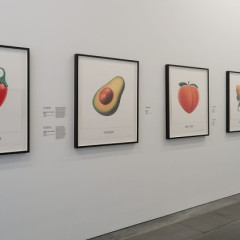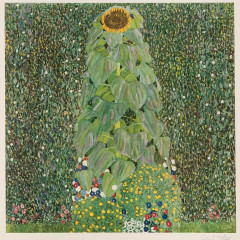Nelson Saiers: "Midas Loses His Touch Chasing His Tail" (2016)

N. S.: "Midas Loses His Touch Chasing His Tail" reflects on Germany's currency from 1914 to 1923. Now, coming into WWI, Germany is on the gold standard, which meant that you could turn paper money into gold. Hence, Midas. Now, as WWI began, they actually went off the gold standard to help pay for their war. Hence, Midas Loses His Touch.
Now, after WWI, due to the draconian reparations demanded by the Treaty of Versailles, Germany began to print money very, very rapidly to pay these reparations off. And as they did that, their exchange rate fell proportionately. And this led [an] English commentator to say, never in the history of the world has a dog chased its tail as fast as the Reichsbank. So this culminated in an exchange rate where literally it would take trillions of marks to get one U.S. dollar.
So, if you look at the imagery itself on the painting, you'll notice that the gold imagery obviously reflects on gold. But also, the circles—you'll see pairs of circles of pretty similar size. And that's a dog's head and dog's tail chasing each other.
Finally, the exponential growth rate of their exchange rate could best be described by the phrase, "to the moon." And, if you look at the imagery, it very much kind of points to a moon-like imagery. If you think of the Apollo mission, or even maybe a Sputnik-type imagery.
[Photo courtesy of Nelson Saiers]


.jpg)
.jpg)



.jpg)
.jpg)
.jpg)




